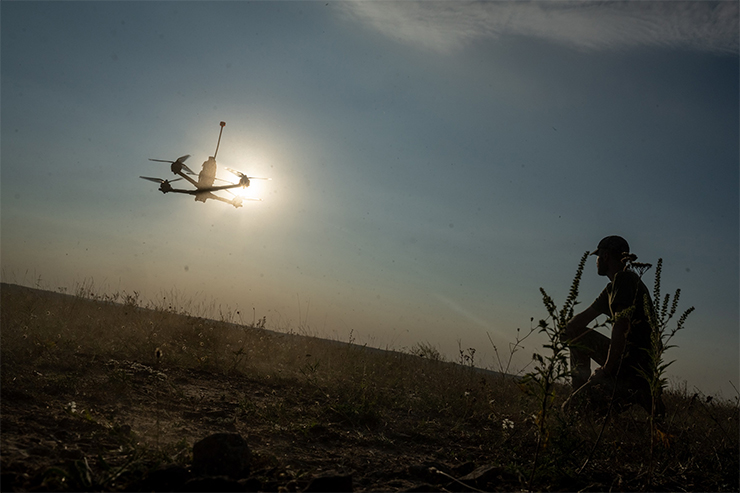
Tel Aviv: Armed forces around the world are facing a very bizarre problem – they are not equipped to cope with the threat posed by a basic aerial system – first-person view (FPV) armed drones. At the same time, armed forces are starting to understand the offensive potential of these drones.
These drones are incredibly fast, precise, relatively simple-to-operate, inexpensive and lethal weapon. These drones first emerged in the war in Ukraine and now with Iran as the major supplier, they are challenging the Israeli Defence Forces in both fronts in the ongoing war – Gaza and Lebanon.
According to a report written by Liran Antebi and Or Adar, the Israeli Defence Forces (IDF) must study the use of these drones in Europe, both as an opportunity for the forces and as a threat against them. It must procure the necessary countermeasures and adapt its military doctrines accordingly.
The report was published in the website of the Israel Institute for National Security Studies (INSS). Antebi is a senior researcher in INSS while Adar is a Major (Res.) in the Israeli Air Force and a very experienced drone operator.
The two write that FPV drones are operated by a person wearing augmented reality goggles, with an antenna, through which the operator sees the area of operation via the cameras of the drone. Before they were turned into weapons, these drones were used by hobbyists for drone races. They are capable of reaching speeds of up to 100 kilometres per hour within just seconds and they can perform complex aeronautical manoeuvres and move through tiny spaces, such as windows and chimneys. They can also navigate precisely around challenging obstacles at speeds of up to 200 kilometres per hour. The cost of mass-produced FPV drones, such as those manufactured by the Chinese company DJI, is just a few hundred dollars and they can be purchased without a license or supervision in electronics shops as well as online. There are also self-assembly drones which are shipped in parts and assembled by the end user for a similar cost.
“Last year, when these drones were first used in the war in Ukraine, they were equipped with explosive capabilities. Given their small size, their payloads are limited and most of them are capable of carrying no more than just a few hundred grams of explosive material, such as a hand grenade, which can only cause limited damage when it explodes in open areas. However, these payloads are capable of killing a person in a direct strike and can cause extensive damage in closed areas, such as vehicles, cargo trucks, tanks and armoured personnel carriers, which these drones manage to penetrate if the operator is a skilled navigator, amply evidenced by video footage of drone attacks from the battlegrounds in Ukraine and Russia. If a drone manages to penetrate a tank through a small opening, it can easily kill all the occupants. Other video footage has shown soldiers from the Russian army attempting to down one of these FPV drones using light firearms, only for the drone to target them in a suicide attack,” mentions the report.
Antebi and Adar write that unless it starts to address this issue in the very near future, the IDF could miss an opportunity with massive potential, especially given how suitable these drones are in challenging combat conditions such as underground and in densely populated areas. Therefore, Israel should consider wider procurement of FPV drones, training soldiers, creating appropriate military doctrines and thoroughly analysing the lessons learned by others on the battlefield especially in Ukraine. Likewise, Israel should consider setting up mechanisms for manufacturing enough FPV drones for Israel’s domestic use, given that the Chinese cannot be relied on to ensure a continuous supply of both drones and components.
“More urgently, the IDF must prepare to defend against FPV drones, given the increased prevalence of these weapons across the world, especially in Russia, from where they could easily make their way to Iran and then to any of Tehran’s terror proxies across the Middle East. The increased ease of self-assembly is a threat that the IDF must not underestimate in terms of its ability to cause harm in the near future. Therefore, the IDF must be ready before the threat appears, especially given that the current conflict has proven that it was previously underprepared. The size and speed of these FPV drones makes them a focused and effective weapon that is very hard to deal with and one which requires dedicated solutions. For example, the iron covering that the IDF has installed on tanks and other vehicles in the Gaza Strip could help protect them from attacks by drones carrying large payloads but are less likely to be effective against a small, fast FPV drone which comes in at a low altitude and is navigated to explode on or inside tanks,” the report emphasises.















